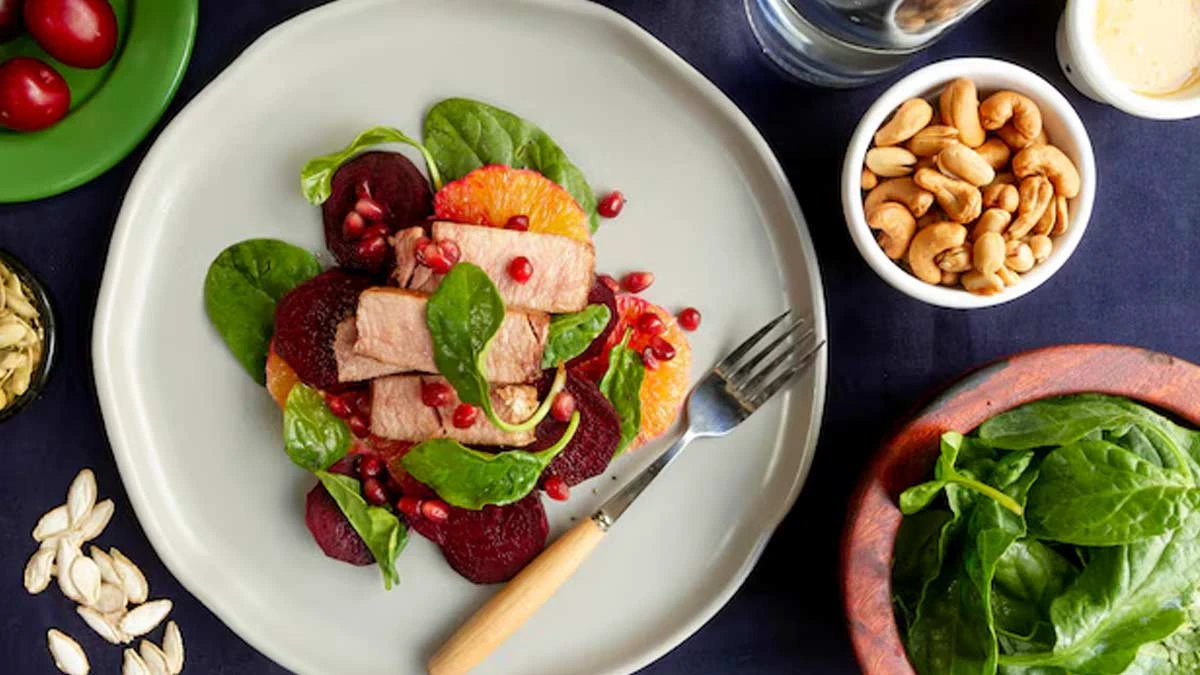Every Indian family has a silent warrior, a woman who balances deadlines, dabbas and dreams on minimum sleep and even less self-care. However, behind all that power lies something that most women overlook: the iron levels.
Iron deficiency does not always raise alarms but often shows up more quietly in the form of tiredness, consistent headaches, or becoming dizzy due to standing up too fast. And what’s more, it is more than likely dismissed as the case of being simply tired.
But the reality is, iron adds to your fire. It charges your cells, alerts your brain, and boosts your energy. So, it is particularly important to take care of your iron, and the best way to do that is to turn to your kitchen for respite. Learn about the 6 Indian foods that every woman needs to take weekly to prevent iron deficiency.
Six Iron Abundant Foods to Add to Your Diet
Iron deficiency is one of the most common nutritional disorders seen in Indian women. Reported in almost 53% of women aged between 15-49 years, as per data in the National Family Health Survey (NFHS). Iron deficiency is often underrated, but it may cause fatigue, shortness of breath, hair loss and poor levels of concentration and even pregnancy complications.
Six Foods Include:
1. Halim or gardening Cress Seeds (Halim/Aliv) – the Hidden Superfood
Halim is iron-packed in small packages. One tablespoon of halim seeds can meet a good percentage of your daily iron needs. They also enhance the uptake of iron, besides being rich in folate and vitamin C. The 2017 study published in the Journal of Food Science and Technology identified garden cress seeds as a superior source of iron due to their high level of bioavailability.
Iron Content: Approximately 100 mg per 100g (dry seeds)
How to Take: Soak a teaspoonful of it in warm water or milk and take with jaggery.
2. Jaggery (Gur) Sweet Iron to Build up the Blood
Back in those days, jaggery was hailed as a common remedy to overcome menstrual weakness, making jaggery more than just a common, old-fashioned sweetener. It increases iron quantities and in a healthier way of sugar cravings.
Iron Content: Approximately 11 mg (per 100g)
How to Take: Instead of using white sugar in tea, sweets or in rotis, use jaggery.
3. Spinach (Palak): The Green Powerhouse
Spinach is the most common leafy vegetable present in Indian homes. It has the non-heme iron (plant-based), which can increase its iron absorption by twofold through combining it with foods that provide vitamin C, such as tomatoes, lemon juice or amla.
Iron Content: About 2.7 mg / 100g (raw)
How to Take: Prepare Palak paneer, spinach paratha, green smoothies or even pastas.
Warning: Raw spinach contains oxalates that prevent the assimilation of iron. Enhance its bioavailability by light cooking.
4. Lentils: Protein and Iron Packet
Pulses are an integral part of the Indian diet, and rightly so! They are full of iron, fibre and protein, which makes them suitable for women who are vegetarians and have low iron. Rajma and masoor dal (red lentils) especially contain a lot of iron.
Iron Content: Approximately 79 mg per 100g (raw).
How to Take: Dal tadka, sprouts or khichdi or lentil soup.
5. Dates (Khajoor) – The Energy Giver of Nature
Although dates will not make it to the top of the iron charts, their natural sugar, fibre and antioxidants ensure that the fruit will be a very good accompaniment food to iron-rich meals. They also quench the urge to take sugary foods, which drain the energy required in iron-deficient women.
Iron Level: 1mg / 100g
How to Take: Consume 2- 3 dates a day as a snack or in smoothies.
Best combined With: Combine dates with milk or nuts to achieve a balanced snack that helps maintain the level of iron
6. Beetroot: Natural Haemoglobin Builder
Beetroot has been used for so long to increase the levels of haemoglobin. Despite the fact that it contains moderate amounts of iron, it will assist in the stimulation of the production of red blood cells and the improvement of the blood flow, thus being suitable for women with heavy menstrual periods.
Iron: Approximately 0.8 mg per 100 g (raw)
How to Eat: Eat it in sandwiches or make juices, or salads.
Bonus: Beetroot also contains abundant nitrates, which aid in blood oxygen delivery and fatigue reduction.
Final Thoughts: Iron is Essential for Women
To avoid iron deficiency, there is no longer a reason to use expensive supplements; you simply have to have a smart plate. These 6 iron-rich Indian foods added to your weekly diet will help you maintain your haemoglobin steady, your energy level even, and your hormone balance in check.
Pro Tip: When eating iron-rich foods, eat them together with sources of vitamin C (such as amla, lemon or orange juice) and avoid tea or coffee shortly after a meal because it prevents absorption of iron in the body.
